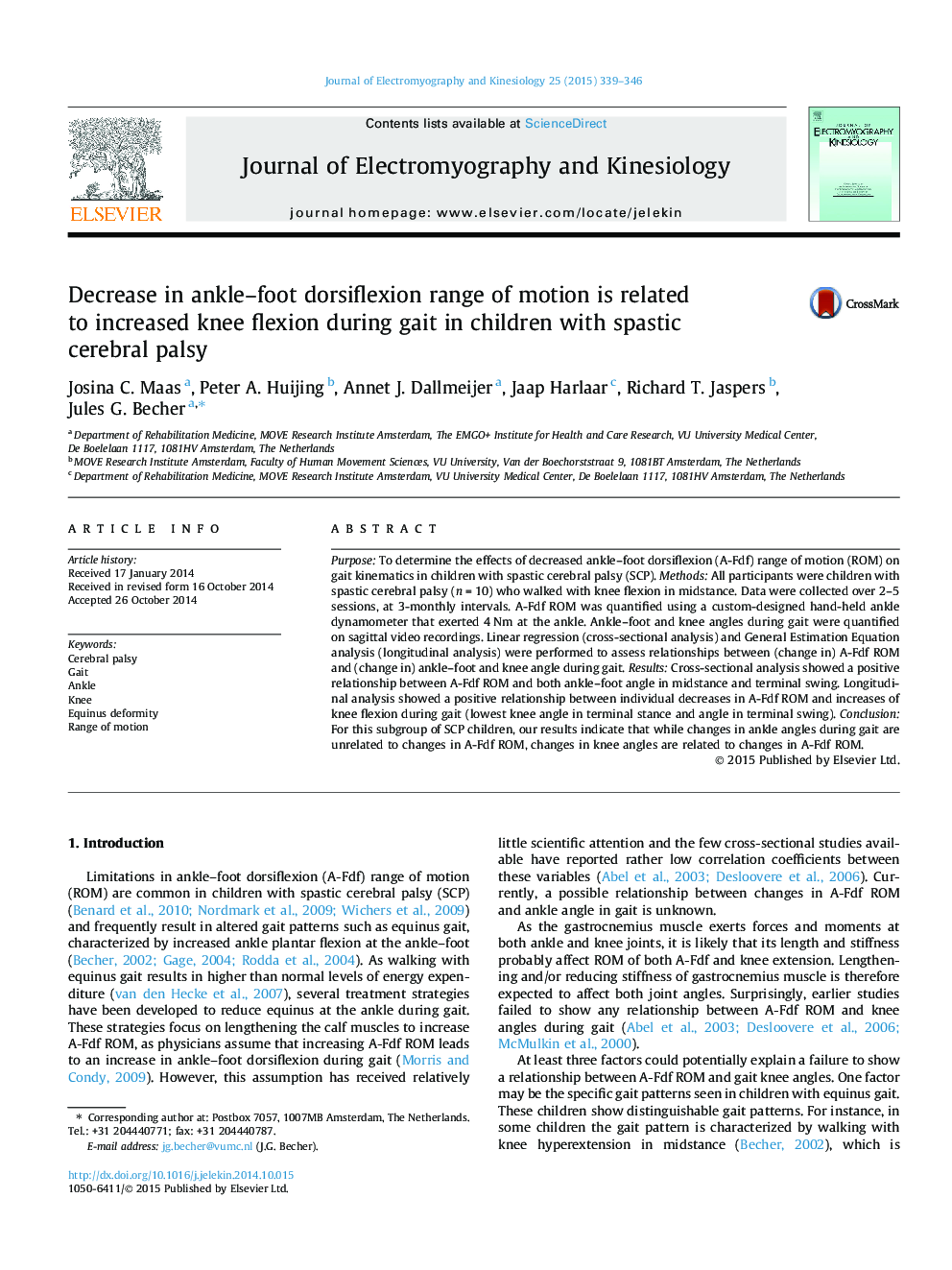| کد مقاله | کد نشریه | سال انتشار | مقاله انگلیسی | نسخه تمام متن |
|---|---|---|---|---|
| 4064694 | 1266222 | 2015 | 8 صفحه PDF | دانلود رایگان |
Purpose: To determine the effects of decreased ankle–foot dorsiflexion (A-Fdf) range of motion (ROM) on gait kinematics in children with spastic cerebral palsy (SCP). Methods: All participants were children with spastic cerebral palsy (n = 10) who walked with knee flexion in midstance. Data were collected over 2–5 sessions, at 3-monthly intervals. A-Fdf ROM was quantified using a custom-designed hand-held ankle dynamometer that exerted 4 Nm at the ankle. Ankle–foot and knee angles during gait were quantified on sagittal video recordings. Linear regression (cross-sectional analysis) and General Estimation Equation analysis (longitudinal analysis) were performed to assess relationships between (change in) A-Fdf ROM and (change in) ankle–foot and knee angle during gait. Results: Cross-sectional analysis showed a positive relationship between A-Fdf ROM and both ankle–foot angle in midstance and terminal swing. Longitudinal analysis showed a positive relationship between individual decreases in A-Fdf ROM and increases of knee flexion during gait (lowest knee angle in terminal stance and angle in terminal swing). Conclusion: For this subgroup of SCP children, our results indicate that while changes in ankle angles during gait are unrelated to changes in A-Fdf ROM, changes in knee angles are related to changes in A-Fdf ROM.
Journal: Journal of Electromyography and Kinesiology - Volume 25, Issue 2, April 2015, Pages 339–346
